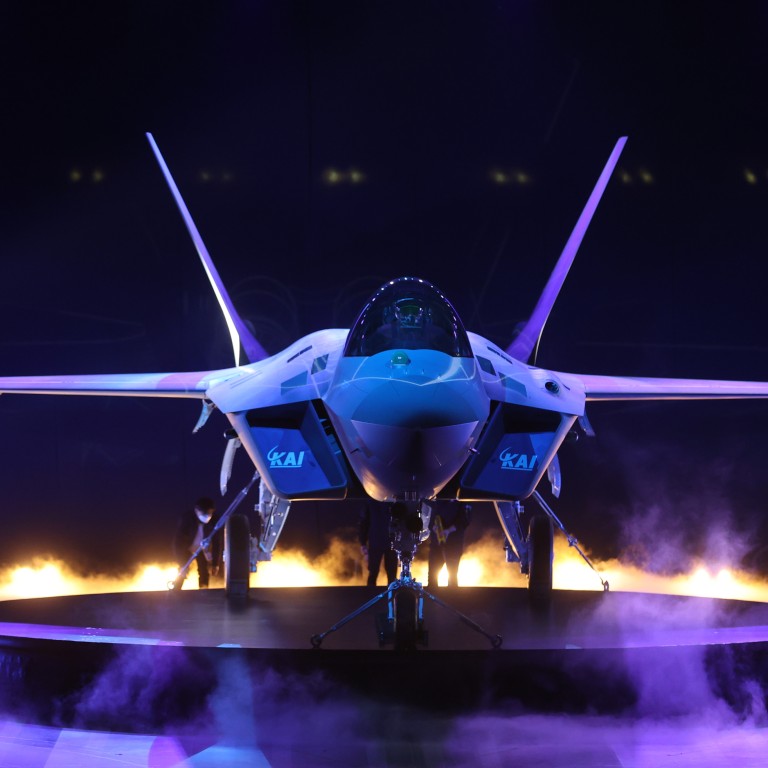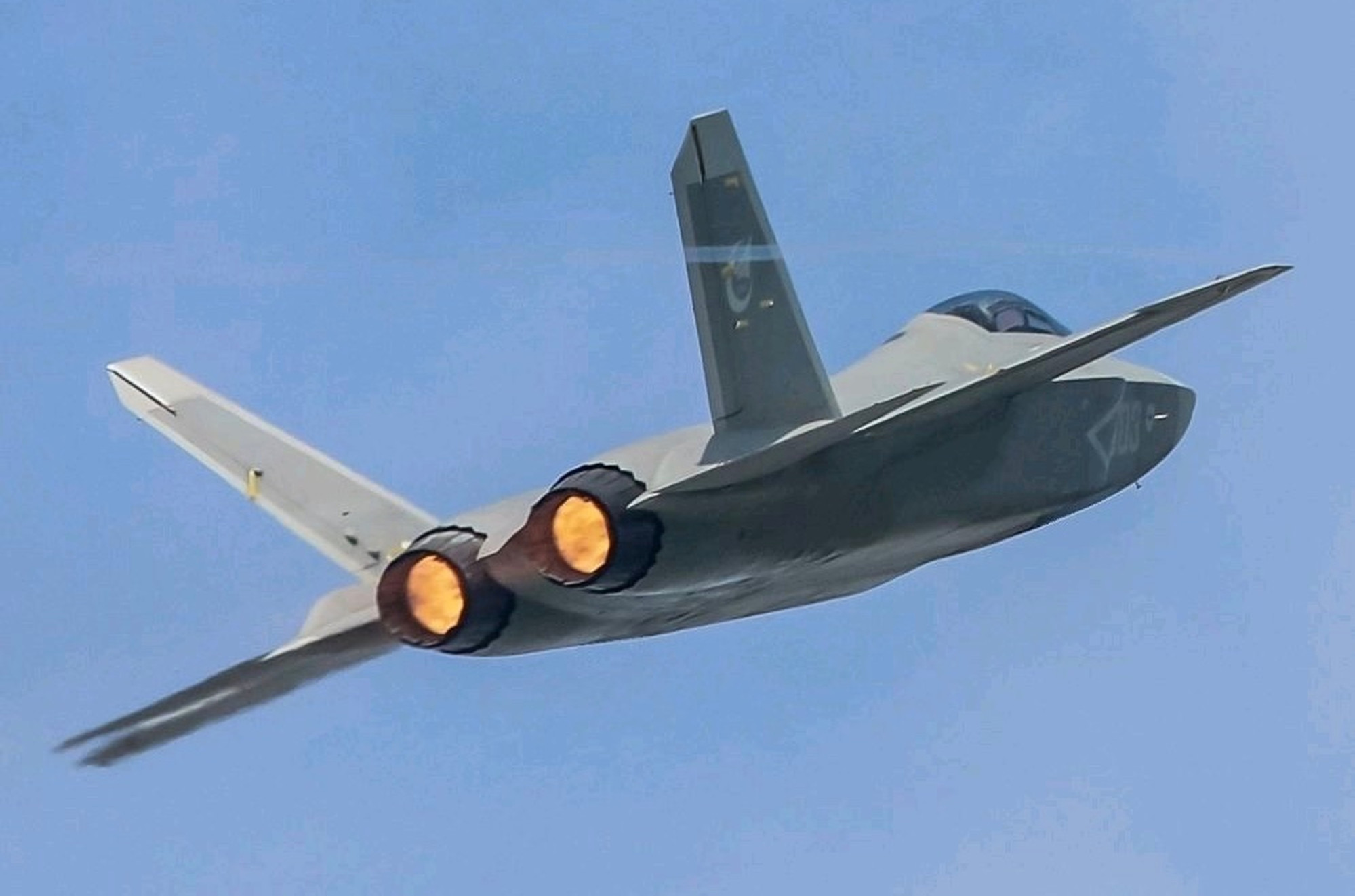
South Korea is zooming ahead with the mass production of its KF-21 fighter jet, and China won’t be happy
- Seoul has announced it will produce up to 40 units of its latest 4.5-generation fighter jet, the KF-21 Boramae
- It is set to rival China’s FC-31, proving a threat to Beijing’s arms export trade as well as its regional air dominance, experts say
The news is likely to cause unease for China because of the jet’s advanced capacity, the potential to enhance the air capabilities of China’s regional competitors as well as its position as a rival to China in the arms export trade, they said.
The South Korean arms procurement agency stressed that securing fighter aircraft that met “the future battlefield operation concept” was essential following the retirement of older operational fighter jets.
“Through this project, it is expected to contribute to strengthening the air force’s base power by preventing a power vacuum caused by ageing, long-term operational fighters and securing Korean aircraft capable of performing cooperative operations with cutting-edge fighters,” DAPA said in a statement last week.
Developed by Korea Aerospace Industries (KAI) and co-produced with Indonesia, the KF-21 is South Korea’s first fully home-grown fighter jet. The supersonic fighter jet project began in 2015 to replace the air force’s ageing fleet of F-4 and F-5 jets.
The South Korean Air Force is expected to receive its first KF-21, dubbed Block-1, in the second half of 2026. Seoul is also aiming to develop KF-21 Block-2 with upgraded air-to-ground attack capabilities by 2028, producing and deploying 120 units in total by 2032.
While the KF-21 currently has limited stealth capabilities, KAI reportedly plans to develop Block-3 by the early 2030s, upgrading the aircraft into fifth-generation or even 5.5-generation fighters with further stealth capabilities and internal weapons bays.
“The KF-21 is a fighter capable of responding to a wide spectrum of aerial threats, including fifth-generation fighters, based on its unique network operation capabilities,” Yang Uk, a research fellow at the Asan Institute for Policy Studies in Seoul, said.
“Although it is known as a 4.5-generation fighter, it is actually a fifth-generation design model and will play an active role as a force multiplier as it will emphasise not only stealth but also network capabilities that can carry out AI-MUMT [artificial intelligence manned-unmanned teaming] operations with various autonomous weapon systems,” he said.
China, of course, is not going to be happy
Bruce Bennett, a defence researcher at the US-based think tank Rand Corporation, said it was likely that China would not be pleased by the addition of the KF-21 to Seoul’s F-35 fleet.
“China, of course, is not going to be happy,” Bennett said.
He pointed out that Seoul’s upgraded air force would “provide capabilities to deal with Chinese fighter aircraft threats and to clearly dominate over [North Korea]”.
Harry Boneham, a senior analyst at global military intelligence company Janes, said it was Beijing’s own military modernisation that drove its rival to retain the qualitative edge. He also noted the KF-21 could be “part of an effective strategy in countering Chinese air power”.
“Its adoption into the South Korean Air Force will certainly enhance its combat air potential,” Boneham said. “The presence of a more capable air force in a nearby rival is likely to be a factor which [Beijing] will consider.”
Yoon Suk-joon, a visiting research fellow at the Korea Institute for Military Affairs and specialist in Chinese weapons systems, echoed the view, saying the KF-21 will “show air superiority compared to J-10, J-11 and J-16”.

Since the developmental phase, both models have been aimed at overseas export, with a similar maximum speed of up to Mach 1.8.
“In many other respects the two planes share similar characteristics. They will be multi-role aircraft that have AESA radars, twin engines, stealth coatings and similar payloads.”
South Korea has signed a deal to provide 50 units of KF-21 to its joint development partner Indonesia, while other countries, such as the Philippines and Poland, have also shown an interest in the jet.
China displays FC-31 fighter model at Saudi defence show amid Mideast conflicts
Riyadh has also shown interest in Seoul’s sixth-generation fighter jet development project, dubbed KF-XX, with KF-21 as its basis, according to South Korean defence minister Shin Won-sik after his visit to Saudi Arabia in February.
“Naturally, exports of the KF-21 will be more dominant,” Yang said. “It is attractive in that it is a non-American weapon system that follows Nato standards.”
Heath said South Korea has the potential to export the KF-21 to countries attracted by the prospect of an advanced fighter that costs much less than the F-35 and is easier to acquire.
“China is likely to view the upgrade primarily as a threat to its own export ambitions of fighter aircraft,” Heath said.
Manila, which is already using South Korea’s FA-50 fighter jet, is reportedly thinking of buying the KF-21.
It is a situation that will only add to the demand for new arrivals like the KF-21 and FC-31.



